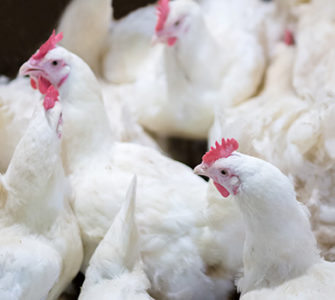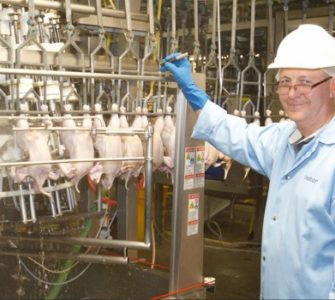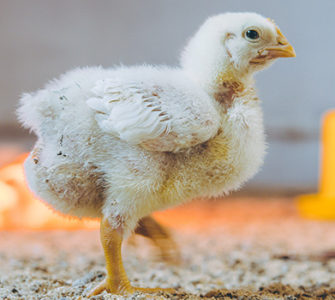Marek’s and Salmonella: John Smith, DVM, offers insights on two new broiler-vaccination trends
John Smith, DVM, poultry veterinarian for Alectryon in Baldwin, Georgia, shared ideas with Poultry Health Today on two changes in broiler-vaccination strategies in the US poultry industry.
Part 1: Taking shortcuts with Marek’s vaccination in the hatchery
Some companies with no antibiotics ever (NAE) production have stopped in ovo vaccination for Marek’s disease because they’re concerned that penetrating the egg with a needle could lead to bacterial contamination in antibiotic-free hatcheries. That can be counterproductive in “no antibiotics ever” production schemes, however, because Marek’s disease is immunosuppressive, Smith said.
Marek’s disease vaccines don’t prevent infection with the virus, they prevent tumors. However, in the early phases of the disease, lymphocytes are affected, leading to immune suppression, the veterinarian explained.
It’s not clear how well Marek’s vaccines counter immune suppression, Smith added, but by giving up vaccination against the disease, producers are giving up whatever protection they afford.
Producers should be able to administer Marek’s vaccine in ovo and still control most of the potential infection consequences with methods other than antimicrobials. This includes breeder-house and nest management, as well as egg collection, sanitation and handling. Hatchery cleanliness is a must, Smith emphasized.
The veterinarian thinks that without antimicrobials, 7-day mortality will go up about 0.5% to 1%. But with attention to detail and a strong emphasis on cleanliness, those losses can be reduced, he said.
For Smith, abandoning Marek’s vaccination, running the risk of condemnations due to tumors and potential immune suppression is an injudicious way of addressing the issue of in ovo vaccination.
Part 2: Does it pay to vaccinate broilers for Salmonella?
Over the past year, there’s been a sharp increase in the number of US poultry operations vaccinating broilers for Salmonella. Smith views the trend as a helpful and effective way for many companies to control the pathogen.
Smith said that Salmonella control must be a global process that encompasses cleanliness throughout the production process as well as vaccination of breeders against the bacterium.
In the past, the industry relied on the processing plant for Salmonella control, which Smith believes is still the most cost-effective and efficient place to attack the problem. However, Salmonella comes to the plant from live production, so the whole production chain must work together to reduce the prevalence, he said.
The new Food Safety and Inspection Service (FSIS) standards for Salmonella on chicken parts is putting increased pressure on the industry. The parts standard is driving home the realization that the industry must use every tool it can, at every point it can, setting up as many hurdles as possible to stop the spread of Salmonella. This includes the increased use of the live vaccine in broilers, Smith said.
Posted on August 23, 2018

















